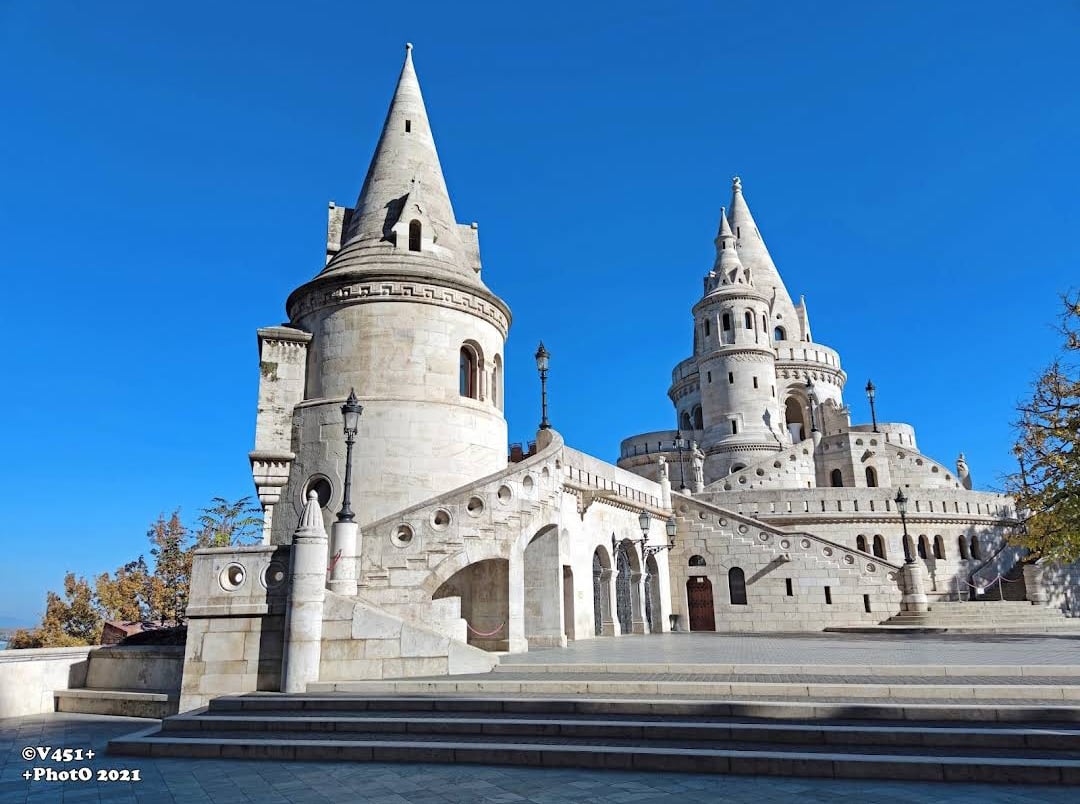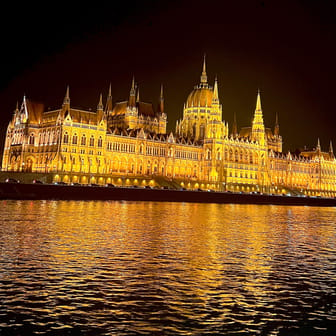Fisherman's Bastion





Ask ThatchGPT
Suggest a local expert to plan my trip
Suggest an unique itinerary for my Budapest trip
What foods do Budapest locals eat
What are some true hidden gems in Budapest
Help me brainstorm trip ideas for Budapest
Help me plan a family-friendly trip to Budapest
What people say
Pedro Pereira
Available for hire
"The Fisherman's Bastion (Hungarian: Halászbástya) is one of the most iconic historical landmarks in Budapest, located in the Buda Castle District near the Matthias Church. This Neo-Romanesque structure offers a stunning panoramic view of the city, including the Danube River, Pest, and other landmarks such as the Parliament and Gellért Hill.
The original walls of the Fisherman's Bastion date back to the 1700s, when it formed part of the Buda Castle's fortifications. The area was traditionally protected by the guild of fishermen, who lived in the nearby settlement known as Fishtown (Halászváros). These fishermen not only sold fish but also defended the castle walls during times of conflict. The bastion's name is derived from this guild and the surrounding district, rather than from its original purpose as a defensive structure.
The current Fisherman's Bastion was built between 1895 and 1902 in Neo-Romanesque style under the design of Frigyes Schulek, who also played a key role in the restoration of the Matthias Church nearby. Schulek transformed this historically military area into a peaceful promenade and lookout point, creating a significant architectural feature on Castle Hill.
The Fisherman's Bastion is marked by seven towers, symbolizing the seven chieftains of the Magyars, who founded Hungary in 895. The main structure is about 140 meters long, with the central parapet measuring 35 meters. The bastion's terraces provide sweeping views of Budapest, making it a popular spot for both locals and tourists.
The design of the Fisherman’s Bastion includes an ornate, decorative stonework façade, corridors that connect different sections of the bastion, and several statues of warriors and historical figures from the 10th century, representing the Árpád dynasty and the early Hungarian military.
A notable feature is the main staircase, which is adorned with Romanesque-style reliefs and statues of warriors. The statues on the main stairs, sculpted by Ferenc Mikula, include figures representing the military culture of the Árpád era, and a lion holding a shield stands guard at the top.
In addition to the view, visitors can explore the parapet that connects different sections of the bastion and enjoy the covered corridors and arches that line the walls of the bastion. These architectural features not only create a serene environment but also offer sheltered spaces for visitors to stroll, making it an ideal spot for relaxation and sightseeing.
Since 1987, the Fisherman's Bastion has been recognized as a UNESCO World Heritage Site as part of the Buda Castle District. The bastion's transformation from a military defense structure into a peaceful observation point highlights its importance in both Hungary's military history and its modern cultural life. Today, it serves as one of Budapest's most visited and photographed attractions."
Read more in:
Sibley Slade
Available for hire
"Halászbástya (hol-larse-baash-tia)
The Bastion was built for the celebration of the Hungarian State's 1000th birthday! Construction began in 1858 and finished in 1902, building up off of an existing castle wall from the medieval period. The architect responsible for the structure you see today (Frigyes Schulek) was also in charge of the restoration of Matthias Church!
Many historians believe that this section of the old wall was defended by the Guild of Fishermen (halasz), "In peace, they would fish, and sell their fish on the fishmarket up in the castle, in war time, they would climb up to the Castle, and take their due part in protecting their home town, Watertown (Vizivaros)." - fishermansbastion.com
Fisherman's Bastion is free to visit.
Read more at the link below! "
Silvia De Caro
Available for hire
"A stone's throw from Buda Castle, you will find the Fisherman's Bastion, a viewpoint that seems to come straight out of a fairy tale! Originally the Fishermen's Bastion was part of the city walls of Buda and had a defensive function. In fact it took its name from the neighborhood of the fishermen, who intervened in case of need as defenders of the bastions. Their seven towers commemorate the seven founding tribes of Hungary. If you visit the Bastion at sunset, in addition to being able to take the best photos, you can take advantage of seeing the whole city lit up.
👣How to get there: reachable on foot from Buda Castle (200m, 3 min)
Metro stop: Batthyány tér, Line M2.
🎟️Ticket cost: free"
Read more in:
Mentioned in these guides
About Fisherman's Bastion
Get the inside scoop on Fisherman's Bastion from local experts, travel creators, and tastemakers. Browse genuine trip notes, Fisherman's Bastion reviews, photos, travel guides, and itineraries from real travelers and plan your trip with confidence.
Phone
Save this spot for later or start mapping out a new trip today
Try our AI Travel Assistant and get instant answers to any questions about your trip.
Ask ThatchGPT


